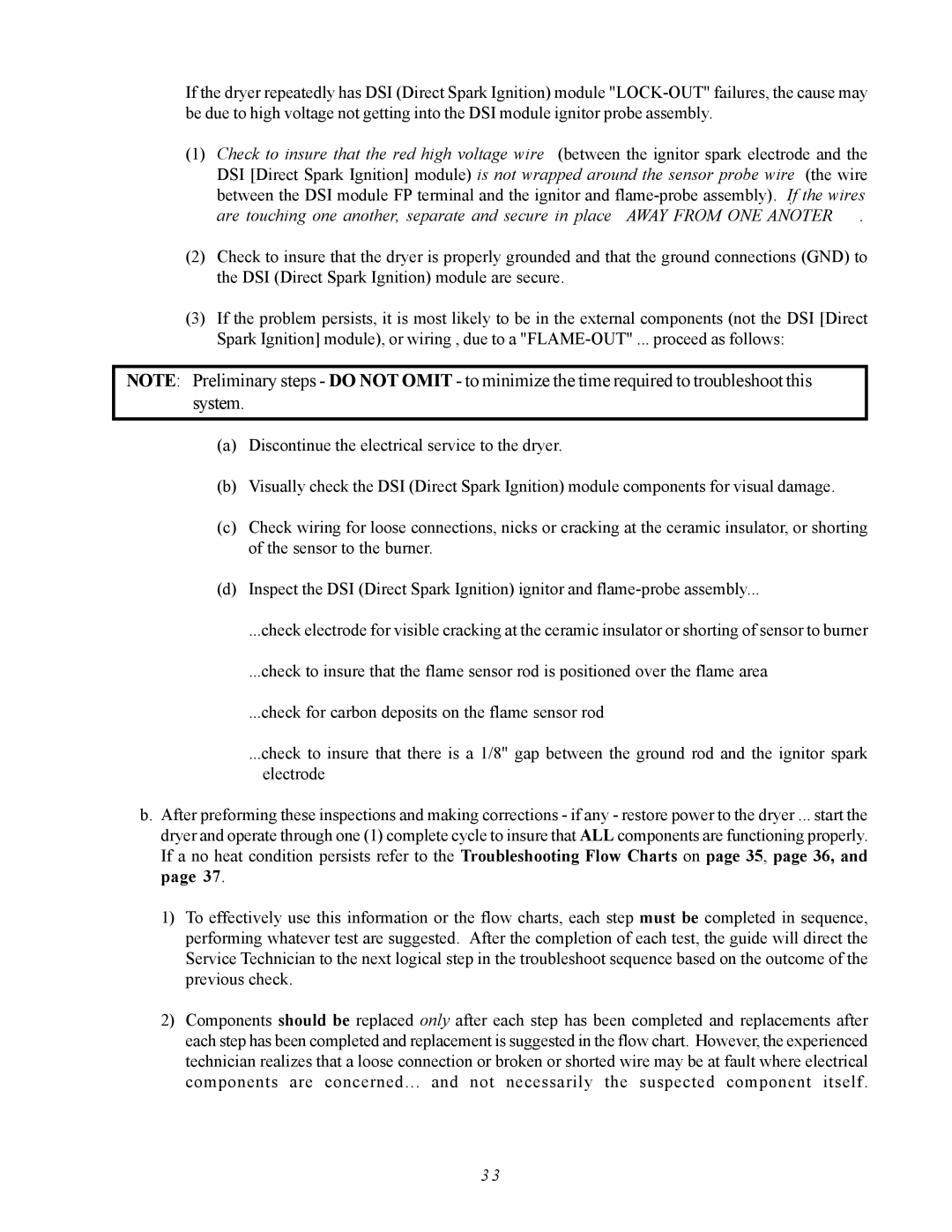If the dryer repeatedly has DSI (Direct Spark Ignition) module
(1)Check to insure that the red high voltage wire (between the ignitor spark electrode and the DSI [Direct Spark Ignition] module) is not wrapped around the sensor probe wire (the wire between the DSI module FP terminal and the ignitor and
(2)Check to insure that the dryer is properly grounded and that the ground connections (GND) to the DSI (Direct Spark Ignition) module are secure.
(3)If the problem persists, it is most likely to be in the external components (not the DSI [Direct Spark Ignition] module), or wiring , due to a
NOTE: Preliminary steps - DO NOT OMIT - to minimize the time required to troubleshoot this system.
(a)Discontinue the electrical service to the dryer.
(b)Visually check the DSI (Direct Spark Ignition) module components for visual damage.
(c)Check wiring for loose connections, nicks or cracking at the ceramic insulator, or shorting of the sensor to the burner.
(d)Inspect the DSI (Direct Spark Ignition) ignitor and
...check electrode for visible cracking at the ceramic insulator or shorting of sensor to burner
...check to insure that the flame sensor rod is positioned over the flame area
...check for carbon deposits on the flame sensor rod
...check to insure that there is a 1/8" gap between the ground rod and the ignitor spark electrode
b.After preforming these inspections and making corrections - if any - restore power to the dryer ... start the dryer and operate through one (1) complete cycle to insure that ALL components are functioning properly. If a no heat condition persists refer to the Troubleshooting Flow Charts on page 35, page 36, and page 37.
1)To effectively use this information or the flow charts, each step must be completed in sequence, performing whatever test are suggested. After the completion of each test, the guide will direct the Service Technician to the next logical step in the troubleshoot sequence based on the outcome of the previous check.
2)Components should be replaced only after each step has been completed and replacements after each step has been completed and replacement is suggested in the flow chart. However, the experienced technician realizes that a loose connection or broken or shorted wire may be at fault where electrical components are concerned... and not necessarily the suspected component itself.
3 3
